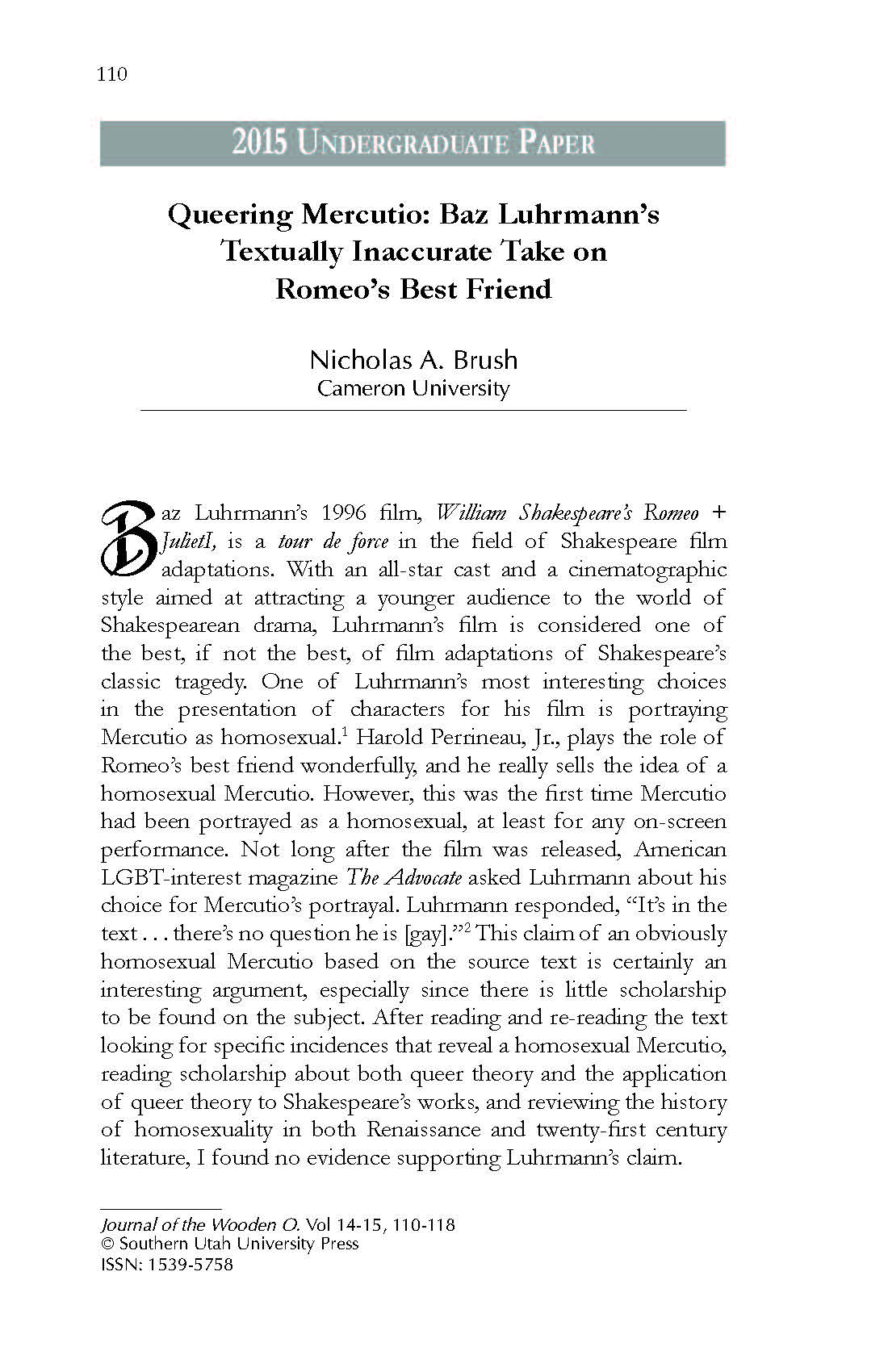Queering Mercutio: Baz Luhrmann’s Textually Inaccurate Take on Romeo’s Best Friend
Main Article Content
Abstract
Baz Luhrmann’s 1996 film, William Shakespeare’s Romeo + JulietI, is a tour de force in the field of Shakespeare film adaptations. With an all-star cast and a cinematographic style aimed at attracting a younger audience to the world of Shakespearean drama, Luhrmann’s film is considered one of the best, if not the best, of film adaptations of Shakespeare’s classic tragedy. One of Luhrmann’s most interesting choices in the presentation of characters for his film is portraying Mercutio as homosexual.1 Harold Perrineau, Jr., plays the role of Romeo’s best friend wonderfully, and he really sells the idea of a homosexual Mercutio. However, this was the first time Mercutio had been portrayed as a homosexual, at least for any on-screen performance. Not long after the film was released, American LGBT-interest magazine The Advocate asked Luhrmann about his choice for Mercutio’s portrayal. Luhrmann responded, “It’s in the text . . . there’s no question he is [gay].”2 This claim of an obviously homosexual Mercutio based on the source text is certainly an interesting argument, especially since there is little scholarship to be found on the subject. After reading and re-reading the text looking for specific incidences that reveal a homosexual Mercutio, reading scholarship about both queer theory and the application of queer theory to Shakespeare’s works, and reviewing the history of homosexuality in both Renaissance and twenty-first century literature, I found no evidence supporting Luhrmann’s claim.
